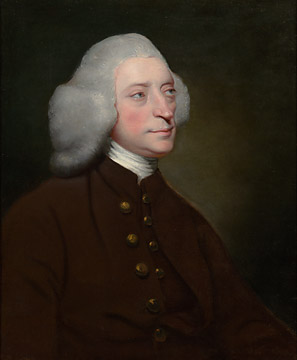John Armstrong (poet) facts for kids
Quick facts for kids
John Armstrong
|
|
|---|---|

Dr. John Armstrong by Sir Joshua Reynolds (c. 1767), courtesy Figge Art Museum, Davenport, USA
|
|
| Born | 1709 |
| Died | 1779 (aged 69–70) |
| Nationality | Scottish |
| Occupation | poet, physician |
|
Notable work
|
The Art of Preserving Health (1744) |
Dr. John Armstrong (1709–1779) was a talented physician, a clever poet, and a sharp satirist. He was born in a place called Castleton Manse in Roxburghshire, Scotland. His father, Robert Armstrong, was a minister there. John studied medicine at the famous University of Edinburgh. He was the very first student to graduate 'with distinction' in 1732! After finishing his studies, he started a successful medical practice in London.
Contents
Who Was John Armstrong?
John Armstrong was known as a good friend to many famous writers of his time. These included James Thomson and David Mallet. He is best remembered for his long poem, The Art of Preserving Health, which came out in 1744. Even though writing about health might seem a bit boring for a poem, Armstrong made it sound graceful and clever.
His Creative Works
Besides his famous health poem, John Armstrong wrote other poems and essays. He also wrote a play called The Forced Marriage, but most of these works are not well-known today. However, he did contribute some lines to his friend James Thomson's poem, Castle of Indolence. These lines described the illnesses that can come from being lazy. John also wrote a book called Sketches, or, Essays on Various Subjects in 1758. He used a pen name, "Launcelot Temple, Esq," for this book.
The Mystery of Castleton
It's quite strange, but the small town of Castleton, where John Armstrong was born, has completely disappeared! It used to have a castle, a church, a minister's house, and many homes. There were even regular markets. Today, nothing is left of the town itself.
A Special Memorial
However, in the old churchyard of Castleton, there is a tall stone monument called an obelisk. This obelisk stands there to remember John Armstrong. The words on the stone talk about how proud people are of his poetry. They say that his name will live forever through his works, even when the stone itself might wear away.
John's Brother: A Pioneer in Medicine
On the same stone monument, there is another important message. It remembers John's brother, George Armstrong, who lived from 1720 to 1789. Dr. George Armstrong is known as the Father of modern Paediatrics. Paediatrics is the branch of medicine that deals with the health of children.
The First Children's Hospital
George Armstrong also founded the world's very first hospital especially for sick children! He spent his life in London helping poor children who were ill. His work made a huge difference in how children's health was cared for.

